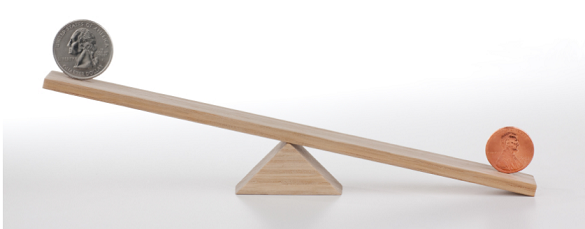Forex and Leverage
Post on: 9 Май, 2015 No Comment

Leverage is the force in trading that enables traders to take exposure to artificially amplified transaction sizes, in order to make more money from each individual transaction. Imagine the scenario where you’re buying shares, with a view to becoming a professional share dealer. Without a massive amount of starting capital, it’s likely to take you some time before you’re in a position to generate anywhere near a full-time income. Markets simply don’t move enough in the day to make that feasible for those with less than 6-figure capital amounts to play with.
Leverage, however, makes up the difference on individual trades, which in turn makes it easier for traders to take a profit. Naturally, as with anything with the potential to return substantial gains, increasing the leverage portion of any transaction also makes things a whole lot riskier, and the difficulties leverage can pose when it starts to work against you are vast.
How does it work?
Leverage is effectively just a short-term, notional loan. It is notional in the sense that you don’t physically receive a loan – it’s simply an automatic credit line extended by your broker in respect of your forex trades. This will normally be comprised of a degree of security money, known as margin, which usually accounts for a certain ratio of the trade, with the remainder being comprised of leverage funding.
Instead of transacting at 100% of your exposed capital, as is always the case when trading 1:1, leverage enables trading at many thousands of percent of your exposed capital, on the proviso that you return the leveraged portion when the transaction closes. Don’t worry – this is automatic. This effectively means you get to keep the earnings on thousands of pounds for every Ј100 you actually risk. While the losses are correspondingly significant, the effect of leverage is to effectively up the ante, and in the process it works extremely efficiently.
Leverage and Forex
In forex trading, the degrees of leverage on offer put other instruments to shame. Whereas CFDs (contracts for difference) offer around 20:1 leverage of 5:1 at best, forex can be traded with rations in the hundreds to one, and as a result leverage is arguably more central to forex trading than to CFDs. With CFDs, the markets traded are usually sufficiently volatile to make smaller degrees of leverage more workable. However, given the greater magnitude of factors required to shift currency pricing, the need for higher degrees of leverage is even greater in order to help traders grind out a return. That said, the extent of leverage at play in forex is enough to have helped countless traders both find and lose their fortunes in the global currency markets.
So leverage is a term you’re likely to come across on a frequent basis throughout this tutorial and elsewhere. To summarise its importance, leverage is the magnifying glass that makes your positions appear bigger than they are to enable larger earnings than would otherwise be possible. While this naturally means a more expansive risk profile, when used correctly it can be the forex trader’s best friend.














